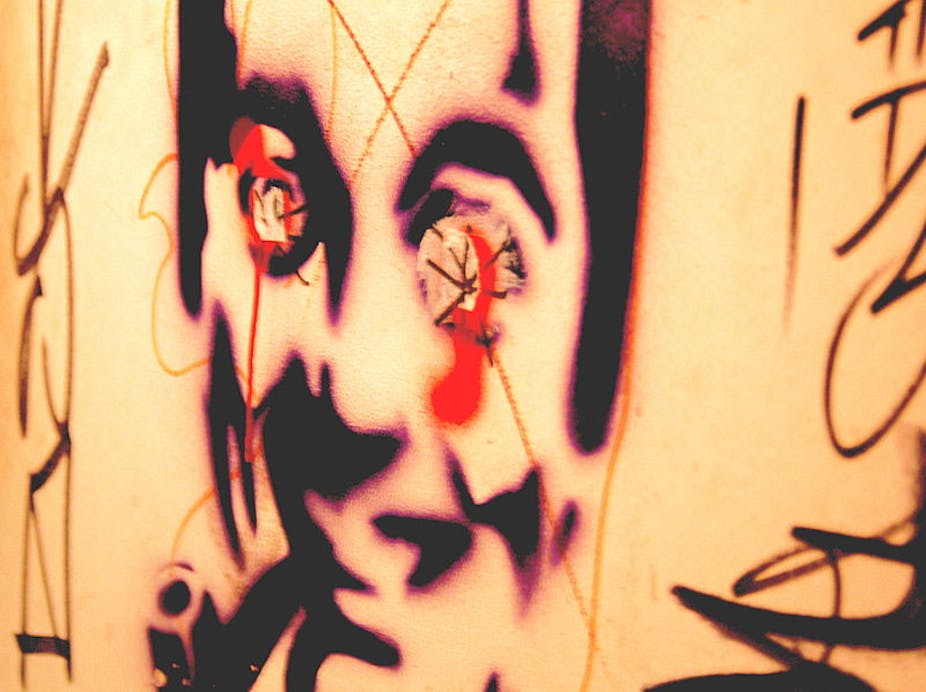MATTERS OF THE MIND – a series which examines the clinician’s bible for diagnosing mental disorders, the DSM, and the controversy surrounding the forthcoming fifth edition.
There’s an old saying that psychology has two model organisms: the rat and the American college student. As research subjects rats are fine, the problem is that that Americans are, as evolutionary psychologist Joe Henrich and his colleagues recently pointed out, WEIRD. That is, they’re Western, Educated, Industrialised, Rich and Democratic. In fact, most westerners are WEIRD, but Americans are the WEIRDest of all.
People in western countries have values and minds that are not like those of the rest of humanity. These differences should not be overstated, but they are real, and they have implications for the cognitive sciences that we are only just beginning to explore.
Many non-western cultures recognise states of mind that look like mental illness but which do not fit the categories of the Diagnostic and Statistical Manual of Mental Disorders (the DSM).
Wacinko is one such illness, found only among the Oglala Lakota people (who are part of the Sioux nation). Wacinko is a state of withdrawn, mute anger, directed at someone else, which may last for years. The Oglala live in the United States, but their culture is not shared with most Americans, and neither is wacinko.
Harvard anthropologist Arthur Kleinman has argued for decades that depression takes different forms around the world. In the Chinese culture, it is likely to manifest as physical aches and pains. The experience of lower back pain and the experience of guilty despair are so different, he says, that Chinese and American subjects might as well have different diagnoses.
What’s in store for the DSM-5?
The DSM-5 looks set to follow its predecessors in coping with cross-cultural variety in two ways.
Some conditions, such as depression and anxiety, are treated as universal – found in every culture. The challenge here is to widen the scope of the diagnosis. It has been suggested that anxiety disorders, for example, should have their “worry domains” expanded because people in other cultures may worry about things that Americans don’t fret over.
We might also want to recognise the greater variety of symptoms among sufferers from anxiety, many of whom, like the Lakota, live in western cultures but don’t show the typical symptoms of a westerner.

The DSM-5 will also follow its earlier versions in devoting a section to “culture-bound syndromes”. These are conditions such as Wacinko, which occur in one culture and do not fit the diagnostic criteria of a recognised mental disorder. The DSM-IV-TR (the current diagnostic manual) called them “recurrent, locality-specific patterns of aberrant behaviour and troubling experience that may or may not be linked to a particular DSM-IV diagnostic category”.
Some entries for culture-bound syndromes offer a possible DSM diagnosis that would fit the condition. There are a number of possibilities offered, for example, for susto, a Latino condition with several distressing psychological and physical symptoms, including troubled sleep, disturbed appetite, headaches and diarrhoea.
The condition is attributed to the soul leaving the body, and ritual healing concentrates on getting it to return. The American Psychiatric Association does not embrace that explanation, but offers a choice of major depression, post-traumatic stress disorder (PTSD) and somatoform (a mental disorder characterised by physical illness) diagnoses.
On the other hand, there is no suggested DSM diagnosis to deal with [koro](http://en.wikipedia.org/wiki/Koro_(medicine), a South and East Asian syndrome marked by the fear that your penis, vulva or nipples will retract into your body and cause you to die.
Small steps to progress
The DSM-IV-TR dedicated a six-page appendix to cultural variation, in a 900 page book, concentrating on conditions that American psychiatrists might see. The DSM-5 is set to make one significant change, adding an interview in the cultural formulation section of the appendix, which aims to help psychiatrists see things from the patient’s point of view, and get more of a sense of cultural context.
This is to be welcomed, but it is difficult to avoid the suspicion that the American Psychiatric Association thinks that Americans are the template for humanity, and departures from US ways of being mentally ill represent odd bits of noise and strange local customs rather than proper scientific categories.
American journalist Ethan Watters, in his book Crazy Like Us, argues that American psychiatry is launched on a campaign of world domination, as cultures all over the world have their mental lives distorted and traditional ways of coping eroded by the spread of DSM categories, and the conceptual and clinical repertoire that comes with it.
Maybe we should start wondering if the western way of being mentally ill is just one culturally distinctive way among others, or even if we are odd ones out. The more we look at depression globally, the more it seems that the culturally-specific East Asian form that Kleinman studied is the human norm, and that the guilty despair that you or I might suffer from is the culture-bound variety.
Perhaps WEIRD people get WEIRD mental disorders, and the DSM is a valuable piece of western anthropology rather than a guide to universal human frailty.
This is the third part of our series Matters of the Mind. To read the other instalments, follow the links below:
Part one: Explainer: what is the DSM and how are mental disorders diagnosed?
Part two: Forget talking, just fill a script: how modern psychiatry lost its mind
Part four: Don’t pull your hair out over trichotillomania
Part five: When stuff gets in the way of life: hoarding and the DSM-5
Part six: Psychiatric labels and kids: benefits, side-effects and confusion
Part seven: Redefining autism in the DSM-5
Part eight: Depression, drugs and the DSM: a tale of self-interest and public outrage
Part nine: Why prolonged grief should be listed as a mental disorder)

